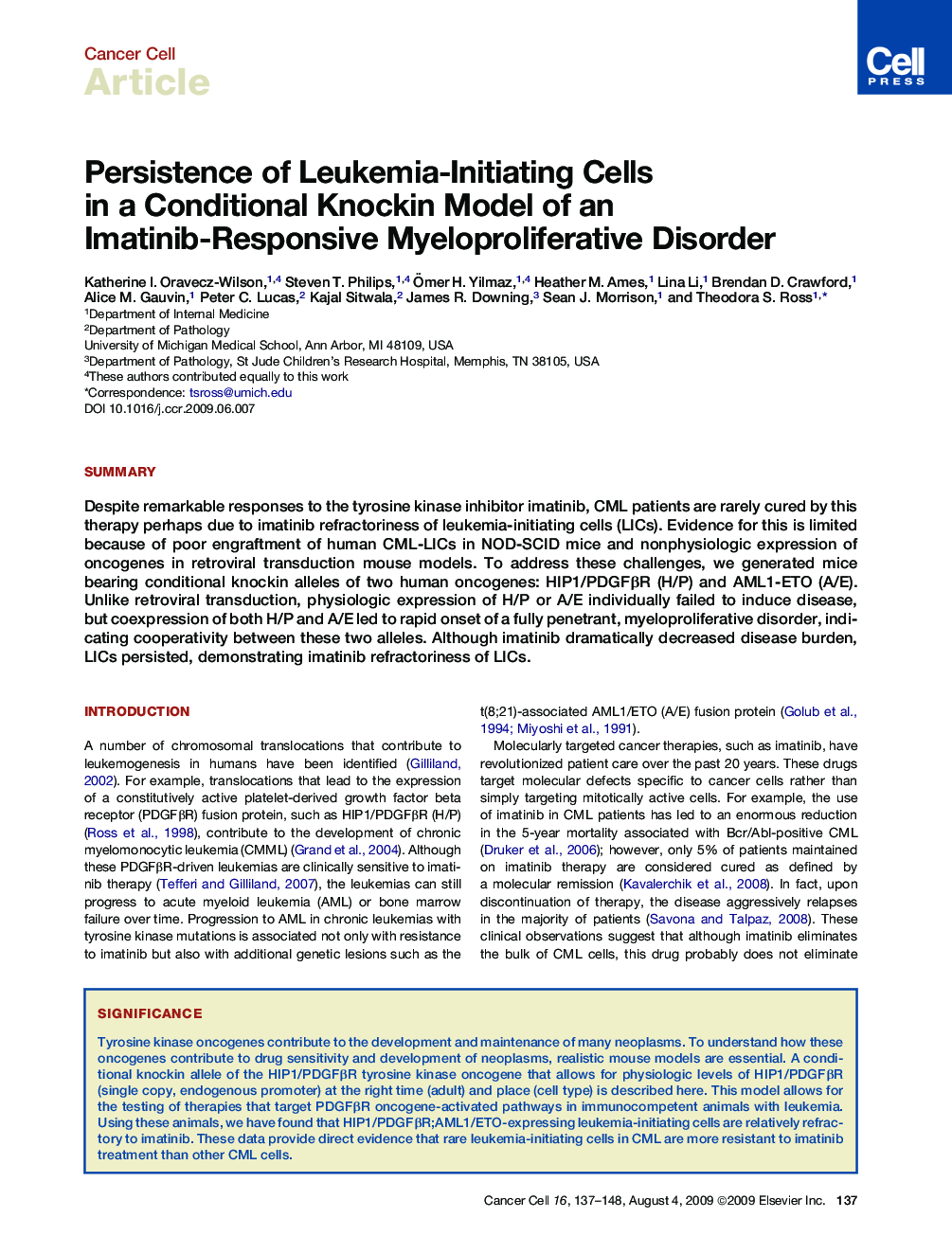| Article ID | Journal | Published Year | Pages | File Type |
|---|---|---|---|---|
| 2107445 | Cancer Cell | 2009 | 12 Pages |
SummaryDespite remarkable responses to the tyrosine kinase inhibitor imatinib, CML patients are rarely cured by this therapy perhaps due to imatinib refractoriness of leukemia-initiating cells (LICs). Evidence for this is limited because of poor engraftment of human CML-LICs in NOD-SCID mice and nonphysiologic expression of oncogenes in retroviral transduction mouse models. To address these challenges, we generated mice bearing conditional knockin alleles of two human oncogenes: HIP1/PDGFβR (H/P) and AML1-ETO (A/E). Unlike retroviral transduction, physiologic expression of H/P or A/E individually failed to induce disease, but coexpression of both H/P and A/E led to rapid onset of a fully penetrant, myeloproliferative disorder, indicating cooperativity between these two alleles. Although imatinib dramatically decreased disease burden, LICs persisted, demonstrating imatinib refractoriness of LICs.
